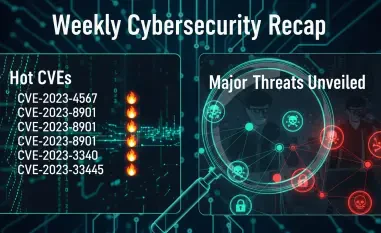In an era where cyber threats evolve at an alarming pace, a new danger has emerged from the shadows of the digital world, orchestrated by the Russian-affiliated hacking group Coldriver, known for targeting high-profile entities like NATO governments and NGOs. This group has recently unleashed a sophisticated malware family dubbed ‘NoRobot,’ raising urgent concerns across the cybersecurity community and highlighting an unprecedented acceleration in their operations that challenges even the most robust defenses. This roundup gathers insights, analyses, and recommendations from various industry perspectives to dissect Coldriver’s latest campaign, explore the implications of their tactics, and offer actionable strategies for mitigation. The goal is to provide a comprehensive view of this escalating threat and equip organizations with the knowledge to stay ahead of such dangers.
Unpacking the Coldriver Threat: A New Era of Malware
Origins and Escalation of Coldriver’s Activities
Insights from multiple cybersecurity reports highlight Coldriver, also tracked under aliases like Star Blizzard and Callisto, as a persistent threat with suspected ties to Russian state intelligence. Active for several years, the group has a well-documented history of espionage-driven campaigns targeting political figures, military personnel, and international organizations. Recent analyses point to a significant uptick in their operational tempo, with the deployment of new malware tools signaling a shift toward more aggressive strategies.
A common observation among industry watchers is the group’s focus on credential theft and sensitive data exfiltration, often aimed at disrupting democratic processes or gaining strategic intelligence. The latest findings suggest that Coldriver has refined its approach since earlier campaigns, moving away from previously exposed tools to evade detection. This adaptability underscores the need for constant vigilance and updated threat intelligence to counter their evolving methods.
The consensus among experts is that Coldriver’s latest activities represent not just a technical challenge but a geopolitical concern. With targets spanning multiple continents, the group’s actions demand a coordinated global response. Discussions in cybersecurity forums emphasize that understanding the historical context of Coldriver’s operations is critical to predicting their next moves and fortifying defenses against them.
Introduction of the ‘NoRobot’ Malware Family
Turning to the specifics of Coldriver’s newest weapon, industry analyses converge on the emergence of the ‘NoRobot’ malware family as a game-changer. Described as a sophisticated set of tools linked through intricate delivery chains, this malware replaces older strains that were publicly disclosed earlier this year. Experts note that the rapid replacement of outdated tools reflects Coldriver’s ability to pivot quickly once their methods are exposed.
Observations from threat intelligence communities reveal that ‘NoRobot’ is often delivered through deceptive phishing lures mimicking CAPTCHA verifications, tricking users into downloading malicious components. This tactic, paired with the use of legitimate Windows utilities to execute harmful code, complicates detection by traditional security software. Many in the field agree that such techniques highlight a growing sophistication in social engineering ploys used by state-backed actors.
Beyond the technical details, there’s a shared concern about the broader implications of this malware’s deployment. Some analyses suggest that the accelerated pace of Coldriver’s campaigns with ‘NoRobot’ indicates a potential escalation in their espionage objectives. This perspective drives home the urgency for organizations to reassess their cybersecurity postures in light of these advanced threats.
Dissecting Coldriver’s Arsenal: Diverse Perspectives on ‘NoRobot’ and Related Tools
The Deceptive ‘ClickFix-Style’ Phishing Tactic
Delving into the initial attack vector, cybersecurity researchers across the board point to Coldriver’s use of a cunning phishing method that mimics CAPTCHA verification pages. This approach, designed to appear as a routine security check, lures unsuspecting users into downloading a malicious dynamic-link library (DLL). Industry insights stress that this method’s effectiveness lies in its ability to exploit human trust in familiar online interactions.
Further examination by threat analysts reveals that the malicious DLL is executed using legitimate system tools, bypassing many conventional security measures. This technique marks a departure from older, script-based methods that were easier to flag. The shift to more covert execution methods is widely seen as a deliberate move to challenge existing detection frameworks, requiring defenders to adapt their monitoring strategies.
A recurring theme in discussions is the difficulty in educating users against such deceptive tactics. Many experts advocate for enhanced training programs that simulate these phishing scenarios to build user resilience. There’s also a call for security tools to evolve, focusing on behavioral analysis rather than relying solely on signature-based detection to catch these subtle attacks.
From ‘YesRobot’ to ‘MaybeRobot’: Rapid Tactical Evolution
Another focal point in industry analyses is Coldriver’s swift transition between malware variants, specifically from the Python-based ‘YesRobot’ to the more flexible PowerShell-driven ‘MaybeRobot.’ Reports indicate that this pivot occurred within weeks around mid-2025, showcasing the group’s responsiveness to exposure of their tools. Experts view this as evidence of a well-resourced operation capable of rapid development cycles.
While ‘YesRobot’ was criticized in security circles for its cumbersome setup, including a noticeable Python installation process, ‘MaybeRobot’ offers a streamlined approach with dynamic command capabilities. However, some analysts caution that despite its flexibility, ‘MaybeRobot’ lacks built-in automated data theft features, suggesting that Coldriver may still be refining its exfiltration methods. This limitation is seen as a potential window for defenders to intervene before more advanced versions emerge.
Differing opinions exist on the long-term risks of these tools. While some in the field believe the extensible design of ‘MaybeRobot’ poses a significant future threat if paired with automated capabilities, others argue that the current constraints provide a temporary reprieve for security teams. This debate underscores the importance of continuous monitoring and proactive updates to threat detection systems to keep pace with such evolving malware.
Adaptive Infection Chains in ‘NoRobot’ Campaigns
Coldriver’s tradecraft in deploying ‘NoRobot’ also garners attention for its alternating use of noisy and stealthy infection methods. Between mid-2025 and late 2025, analyses note frequent changes in infrastructure, filenames, and execution techniques to frustrate reverse-engineering efforts. This adaptability is widely regarded as a hallmark of Coldriver’s strategy to maintain operational effectiveness despite increased scrutiny.
Regional targeting patterns, as discussed in various threat reports, suggest a focus on specific geopolitical areas, hinting at broader espionage motives. Some experts interpret the rotating infrastructure as an attempt to obscure attribution and sustain long-term campaigns. This perspective raises questions about the adequacy of static malware signatures in countering such dynamic threats, pushing for more adaptive defense mechanisms.
A point of contention among industry voices is whether current detection updates can keep up with Coldriver’s iteration speed. While some advocate for reliance on machine learning to predict attack patterns, others stress the need for real-time threat intelligence sharing to map out infection chains comprehensively. This diversity in thought highlights the complexity of defending against a threat actor that continuously reinvents its approach.
Espionage Goals and Wider Implications
Coldriver’s overarching mission of espionage remains a central theme in expert discussions, with a consistent focus on credential theft and data harvesting from high-value targets. Historical campaigns targeting political systems and military figures are often cited as evidence of state-sponsored motives, with the latest ‘NoRobot’ campaign seen as a continuation of these objectives. Many agree that the group’s actions align with strategic intelligence-gathering efforts.
Comparing ‘NoRobot’ to earlier tools like ‘LostKeys,’ industry perspectives note a marked increase in operational sophistication and speed. This evolution suggests that Coldriver is not only reacting to disclosures but also proactively enhancing its capabilities. Some analysts speculate that future iterations could integrate automated exfiltration features, significantly heightening the risk to sensitive information globally.
There’s a shared concern about the potential for Coldriver’s tactics to inspire other threat groups, amplifying the espionage threat landscape. While opinions vary on the immediacy of this risk, there’s a consensus on the need for heightened international awareness and collaboration to address such challenges. This viewpoint reinforces the idea that isolated defenses are insufficient against coordinated, state-backed cyber operations.
Key Takeaways from the ‘NoRobot’ Campaign: Collective Wisdom
Focusing on the critical lessons from Coldriver’s latest efforts, industry insights emphasize the deceptive nature of their phishing lures as a primary vector for malware delivery. The rapid evolution of tools like ‘NoRobot’ and ‘MaybeRobot’ is frequently highlighted as a reminder of the group’s agility in sidestepping detection. Additionally, the persistent focus on espionage over outright disruption is seen as a defining characteristic of their strategy.
Recommendations from various sources converge on the importance of user education to recognize and resist phishing attempts that mimic legitimate processes. Monitoring for unusual DLL executions within networks is also advised as a practical step to catch infections early. These measures are considered essential building blocks for organizations aiming to fortify their first line of defense against such sophisticated threats.
Further guidance includes updating threat detection systems to flag PowerShell anomalies, given Coldriver’s reliance on this framework in newer variants. Staying informed through regular updates from threat intelligence communities is also encouraged to track the group’s shifting tactics. These actionable steps are viewed as vital for maintaining resilience in an environment where threats evolve at a relentless pace.
The Continuous Struggle Against Coldriver: Shared Strategies
Reflecting on the persistent challenge posed by Coldriver, expert analyses over the past months consistently point to their adaptability and access to state-backed resources as key factors in their sustained impact on global security. The sophistication of tools like ‘NoRobot’ underscores the difficulty in predicting and countering their next moves, keeping cybersecurity teams on high alert.
International collaboration has emerged as a cornerstone of the response strategy, with shared intelligence proving invaluable in mapping out Coldriver’s tactics. Moving forward, organizations are encouraged to invest in proactive defenses, such as threat hunting and anomaly detection, to anticipate rather than merely react to attacks. Exploring partnerships with global cybersecurity initiatives can also amplify the effectiveness of these efforts.
As a next step, integrating advanced behavioral analytics into security frameworks offers a promising avenue to detect subtle attack patterns that evade traditional methods. By prioritizing these innovative approaches and maintaining a commitment to continuous learning, entities can better position themselves to mitigate the risks posed by Coldriver and similar threat actors in the evolving digital landscape.













